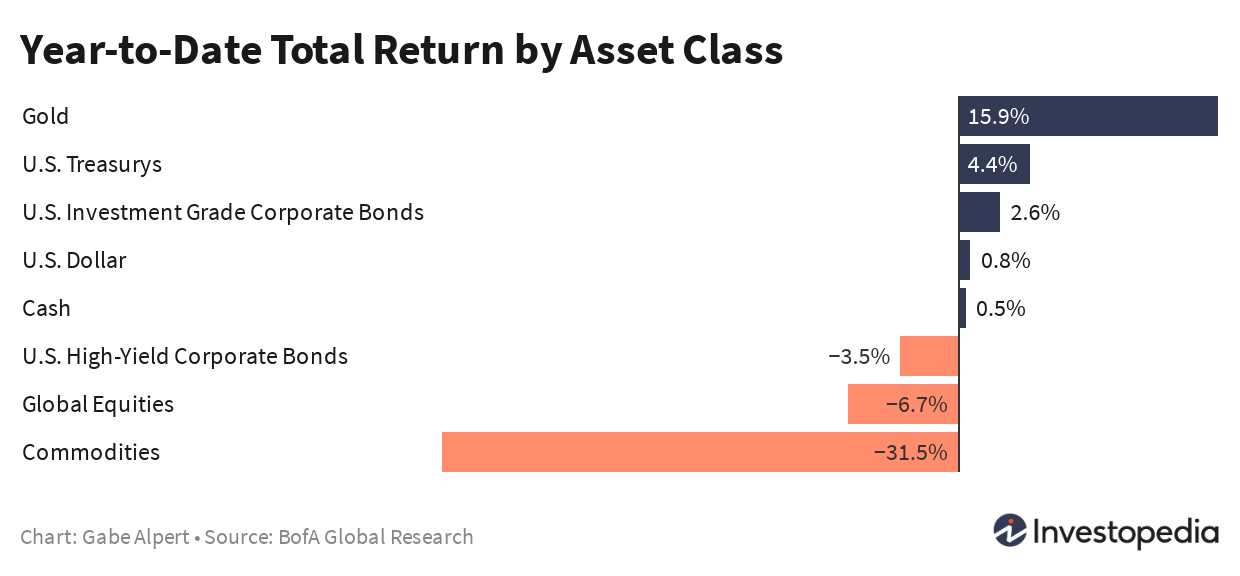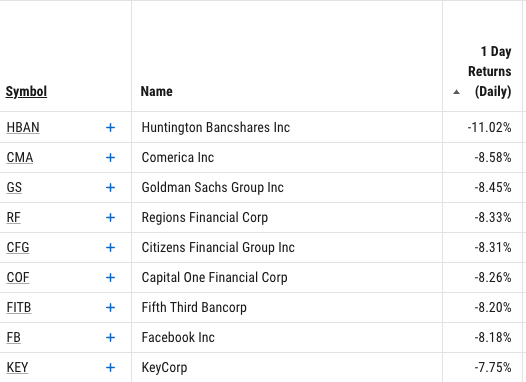| Friday's Headlines 1. US markets in steep sell-off as bank stocks sink 2. DJIA and S&P 500 hit lows for the month 3. More big brands ditch Facebook for advertising 4. 2020 by the numbers 5. The biggest obstacles facing a US recovery Markets Closed
Year-to-Date
 Markets Today Pessimism ran high to close out the week as a rash of bad news and tougher rules on banks mandated by the Fed soured sentiment. All sectors of the S&P 500 closed lower today, and the DJIA is at its lowest levels in a month. June looks like it will end up with the DJIA and the S&P 500 in negative territory after a blistering May.
Bank stocks led the market lower today as investors are not liking the Fed's mandate that they hold more capital and not increase their dividends this year. A dislocated economy, high unemployment, ultra-low interest rates, and more capital reserve requirements are all a recipe for bad bank profits.
More states halted their reopening plans, as Florida closed all bars and Texas ramped up social distancing guidelines, again. The U.S. should take a long look at what European countries have done to slow the spread of the virus, as there is a lot to be learned from their example. chart courtesy Deutsche Bank  [NEW READER SURVEY: As promised, we are running another two-week survey of our U.S.-based readers to gauge your sentiment and see what moves, if any, you have been making with your money given the market recovery. We'll share the results, as always, and we thank you for your time and participation.]
Headlines:
*Correction: Yesterday, I stated that the FDIC insures bank deposits up to $500,000. One of our smart readers pointed out that it's only up to $250,000. He's right—my apologies. Read more here.*  2020 By The Numbers 2020 has been a most unusual year for investors. If I told you in January that gold, tech stocks, and government bonds would deliver the best returns for the first half of 2020, you probably would've unsubscribed.
But those returns don't even begin to tell the story of what has unfolded so far. Here are a few more:
The second half of the year will be anything but smooth. Sentiment has been bearish for weeks, and the challenges in the way of a robust economic recovery seem to compound daily.  chart courtesy MorganStanley Four Big Risks to the U.S. Recovery The resurgence of the virus and the recent spikes in cases across cities that have reopened is far and away the biggest risk to our health and our economies. As per the chart above (apologies for the blur), open states have seen the most virus spikes in the past month. Underneath that risk are a series of other clear and present challenges facing the U.S. economy. Here are some of the main ones:
 What to Expect This Week Manufacturing reports from major economies for the month of June will indicate how strong the recovery has been this past month. The June U.S. unemployment report on Thursday will show us whether May's surprise was a fluke or a trend.
Here are just some of the major economic events to focus on in the week ahead:
Tuesday, June 30:
Wednesday, July 1:
Thursday, July 2:
Friday, July 3:
SPONSORED BY DIREXION
(chart courtesy YCHARTS)  Kanye West came through for The Gap, agreeing to a 10-year licensing deal to produce a low cost clothing line for the mass market. Networking and telecom equipment stocks were among the rare winners today.  Banks of all sizes were sold hard today, from Goldman Sachs to Huntington Bancshares. The Fed's mandate to hold capital reserves at high levels and the prohibition of dividend increases led to pessimism against the sector. Word of the Day Weak longs are investors who hold a long position and are quick to exit that position at the first sign of weakness. This type of investor is typically trying to capture upside potential in a given security but is not willing to take much loss. These investors will quickly close their positions when a trade does not move in their favor.  image courtesy loc.gov Today in History June 26, 1934: The Federal Credit Union Act was signed by President Roosevelt during the depths of the Great Depression, in 1934. The law enabled credit unions to be organized throughout the United States under charters approved by the federal government. The purpose of the federal law was to make credit available to Americans and promote thrift through a national system of nonprofit, cooperative credit unions.
How can we improve the Market Sum? Tell us at marketsum@investopedia.com
CONNECT WITH INVESTOPEDIA
Email sent to: mondemand.forex@blogger.com To update your newsletter preferences or unsubscribe, click here.
114 West 41st St, floor 8 New York NY 10036 © 2020, Investopedia, LLC. All Rights Reserved | Privacy Policy
|
Friday, June 26, 2020
Red Flags
Subscribe to:
Post Comments (Atom)



No comments:
Post a Comment